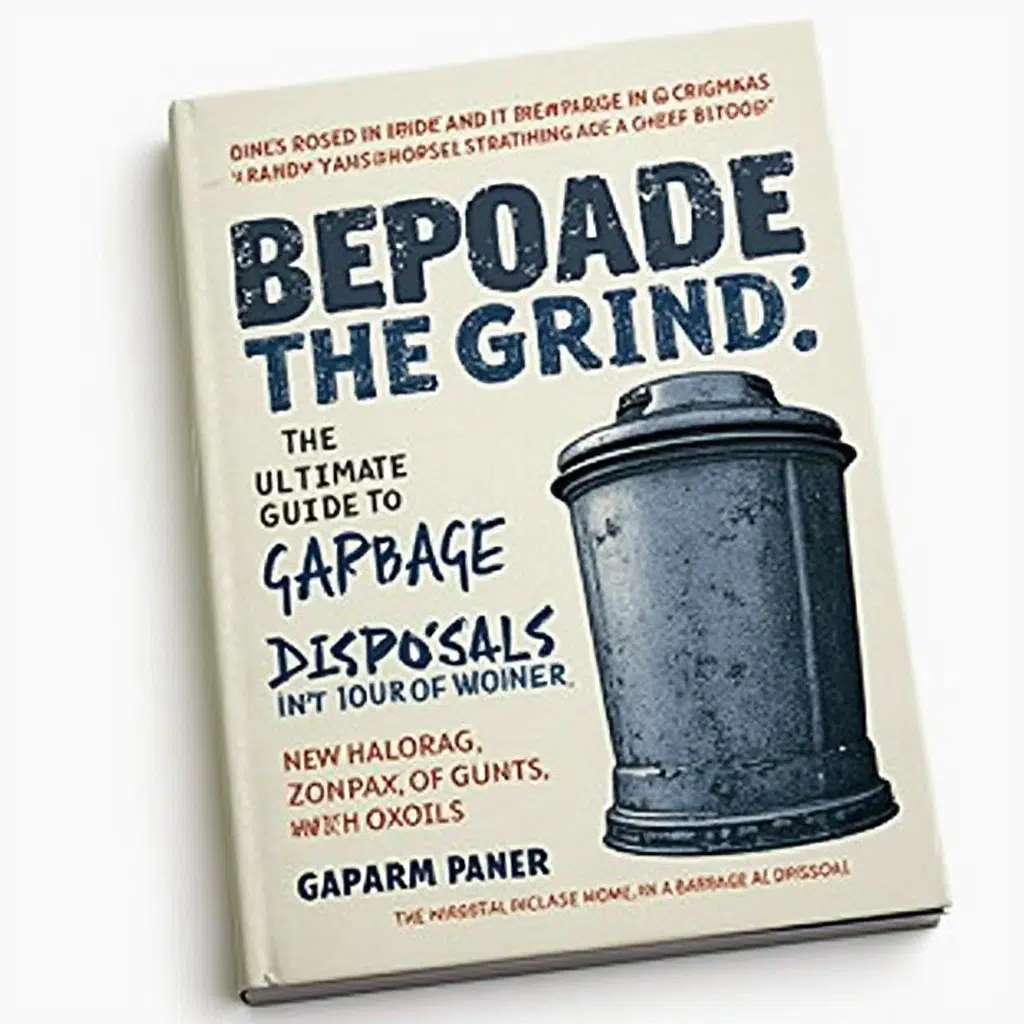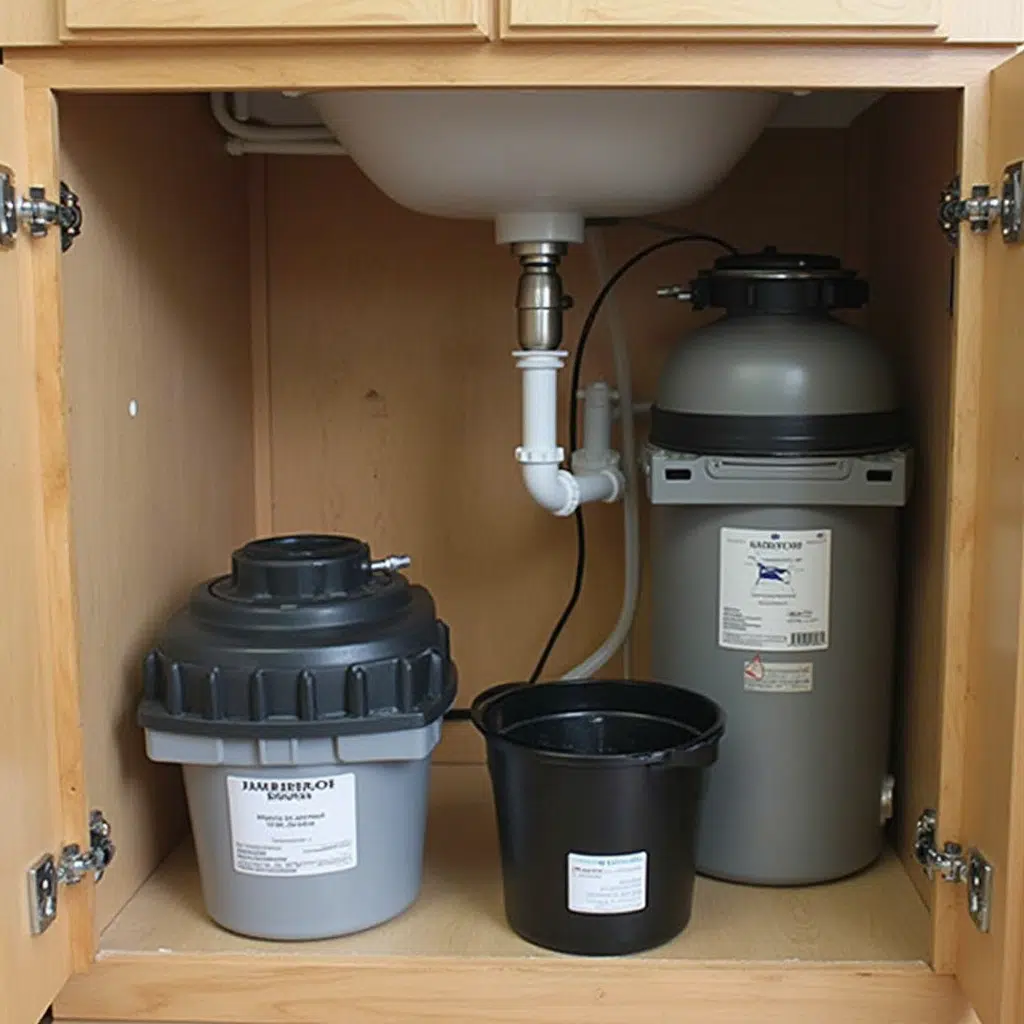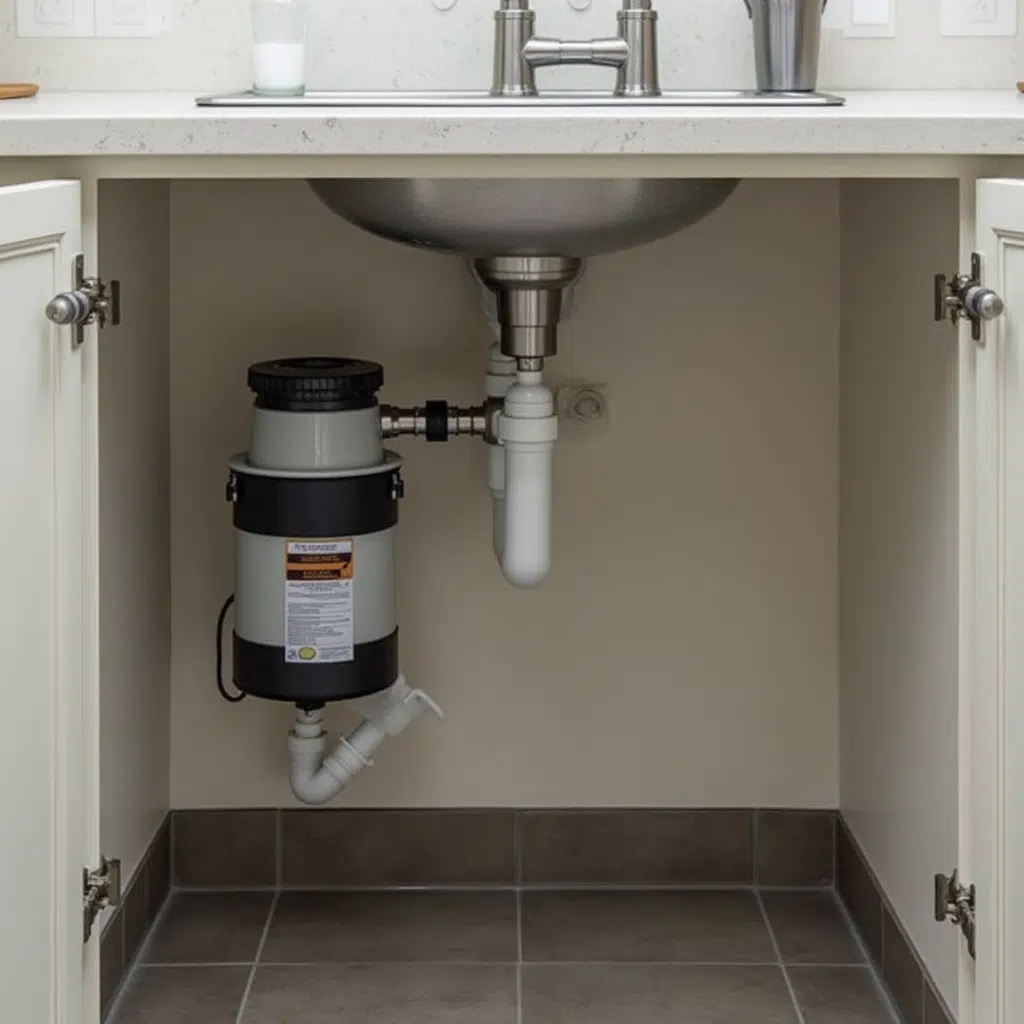Ever stood at your kitchen sink, wondering, “how does a garbage disposal work?” Or maybe you’ve asked yourself, “how does a garburator work?” – the Canadian term for the same device. Whether you call it a garbage disposal, garburator, or food disposal, these kitchen workhorses are fascinating pieces of engineering that make our lives easier every day.

Many people ask us “how does a food disposal work?” expecting to hear about spinning blades like a blender. However, garbage disposals use a much more sophisticated system of rotating impellers and grinding rings to pulverize food waste.
When you drop food scraps into your device, they fall into a grinding chamber. Inside, a spinning metal plate called the impeller plate rotates at about 2,000 RPM when you flip the switch. The impeller plate has lugs that throw food waste against a stationary grinding ring. This ring has small holes and grooves that help break down the food. The process continues until the food particles are small enough to pass through the holes in the grinding ring, where they’re flushed away with running water.
To understand this modern kitchen convenience, we need to explore its origins. Before their invention in 1927 by John W. Hammes, kitchen waste management was a significant challenge for homeowners. Hammes, an architect from Racine, Wisconsin, spent eleven years perfecting his design before establishing the InSinkErator company, which remains a leading manufacturer today. When people ask “how do garbage disposals work?” they’re often surprised to learn that the basic technology hasn’t changed much since its invention.

When you know how a garbage disposal works, you can better appreciate its value in modern kitchens. These devices significantly reduce food waste by processing it immediately instead of filling up your trash can. This immediate processing also eliminates unpleasant odors from rotting food in your kitchen trash. From an environmental perspective, properly disposed food waste can be processed at water treatment facilities, making your home more eco-friendly.
Modern garbage disposals come in two main categories: continuous feed and batch feed. Continuous feed ones are the most common, allowing you to add food waste while the unit is running. Batch feed units, while less common, offer additional safety features as they only operate when a special cover is in place. Understanding how a garburator works in each type can help you choose the right model for your home.
Today’s advanced models come equipped with innovative features that align with modern smart home systems. Some units include auto-stop sensors that detect foreign objects, preventing damage and extending equipment life. Others feature built-in antimicrobial protection that helps control odor-causing bacteria.
The latest technologies even include power-sensing circuits that automatically adjust grinding power based on waste volume and type, optimizing performance while reducing energy consumption. For tech-savvy homeowners, some premium models offer smartphone connectivity, sending maintenance reminders and usage statistics directly to your device.
Many people misunderstand how food disposals function, believing they contain sharp blades like a blender. In reality, these devices rely on centrifugal force and grinding surfaces to break down food waste. This understanding is crucial for proper operation and maintenance. Another common misconception is that any food can go down a disposal. The truth is that certain items should never enter your grinding system, as they can cause damage or clogs.
To keep your unit running efficiently, always run cold water before, during, and after operation. It’s crucial to feed waste gradually, rather than overloading the unit with too much food at once. Monthly cleaning with ice and citrus peels will help maintain optimal performance and fresh scent. Knowing how garbage disposals work helps you avoid putting in items that could damage the system, like fibrous foods, bones, or non-food items.

Water quality plays a very important role in garbage disposal maintenance. Hard water can lead to mineral buildup inside your unit, potentially affecting its performance over time. Regular cleaning and maintenance become even more important in areas with hard water. Using cold water during operation helps prevent grease from congealing and maintains optimal grinding conditions.
Your garbage disposing device will usually tell you when it needs attention through unusual noises, slow draining, frequent resets, or persistent odors. When these signs appear, it’s time to consider professional maintenance. At 5 Star Plumbing, we don’t just know how garbage disposals work – we understand how to keep them working optimally for years.
Now that you understand how a garbage disposal works, you can better maintain this essential kitchen appliance. Whether you call it a garburator, food or garbage disposal, proper use and maintenance will keep it running smoothly for years to come.
Remember, a well-maintained disposal systems for garbage isn’t just a convenience—it’s an investment in your kitchen’s efficiency and your home’s functionality. Don’t wait until problems arise; give your equipment the attention it deserves to ensure years of reliable service.
I bring over 9 years of dedicated plumbing experience to the table. As a seasoned professional in the plumbing industry, I've tackled a wide range of projects, from residential repairs to large-scale commercial installations.
Finally, a comprehensive guide that makes sense! Been struggling with my disposal for months – the cleaning tips with ice and citrus peels worked wonders. Thanks for sharing!
Finally, a comprehensive guide that goes beyond the basics of garbage disposal care! The article’s section on what should never go down the disposal saved me from a potential disaster with coffee grounds. I found the troubleshooting chart particularly useful when my unit started making strange noises last week. The comparison of different horsepower options helped me understand why my old 1/3 HP unit struggled with larger loads. While the installation tips are helpful, I wish they’d included more info about hardwired versus plug-in models. Overall, this guide is a must-read for anyone who wants to keep their disposal running smoothly.